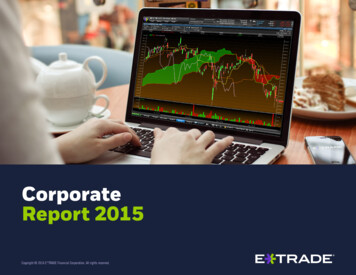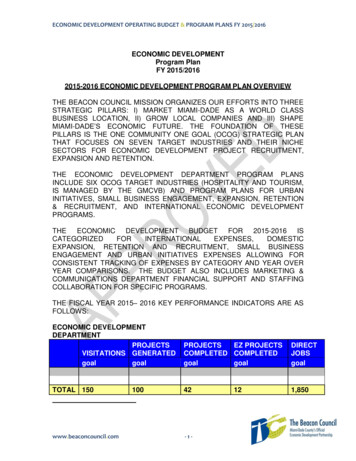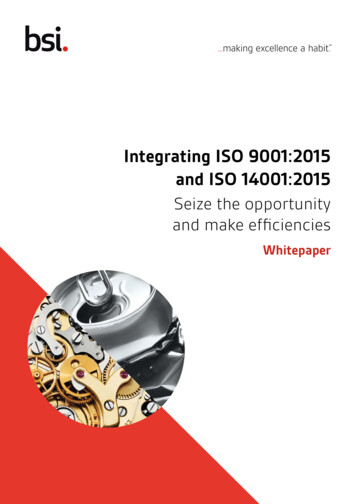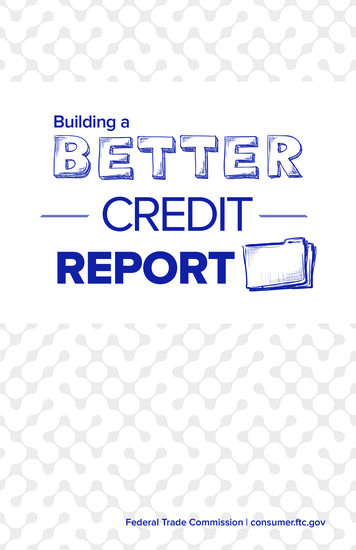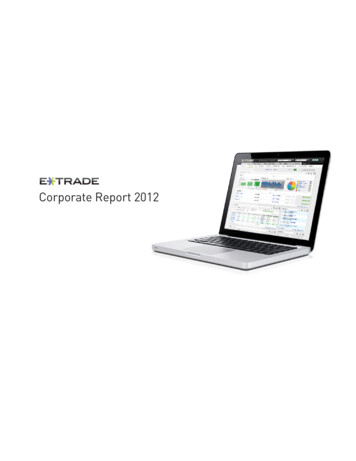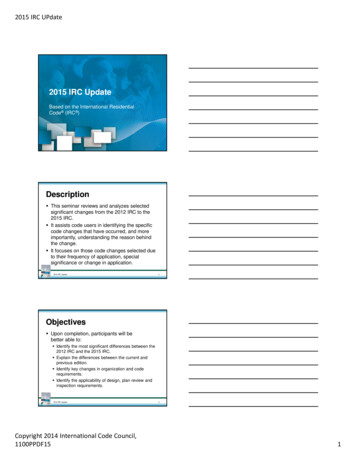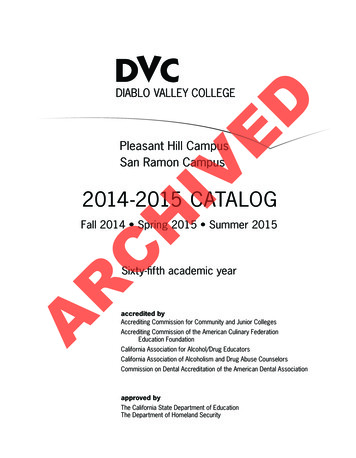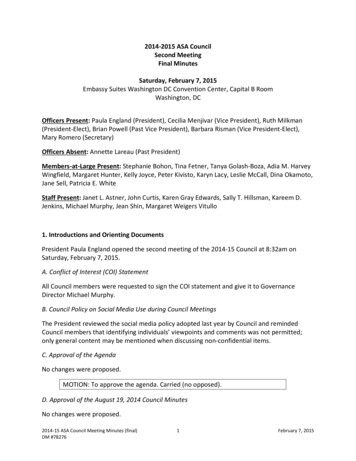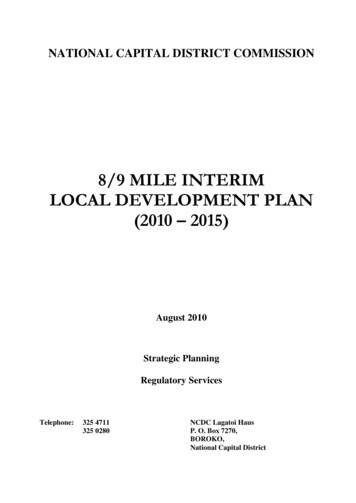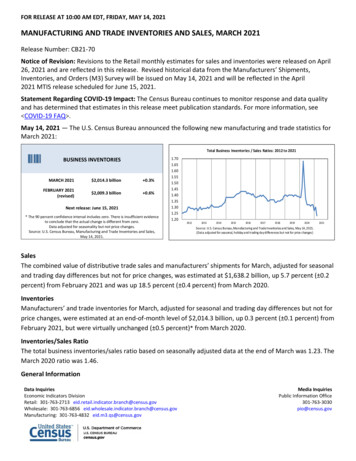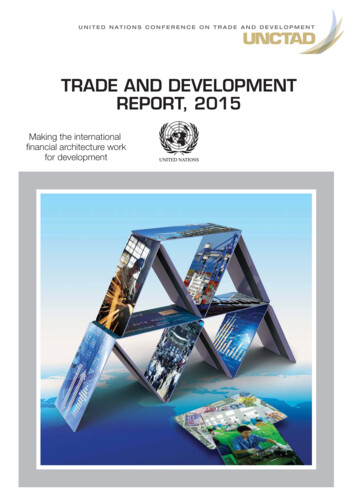
Transcription
U N I T E D N AT I O N S C O N F E R E N C E O N T R A D E A N D D E V E L O P M E N TTRADE AND DEVELOPMENTREPORT, 2015Making the internationalfinancial architecture workfor development
UNITED NATIONS CONFERENCE ON TRADE AND DEVELOPMENTGENEVATRADE AND DEVELOPMENTREPORT, 2015Report by the secretariat of theUnited Nations Conference on Trade and DevelopmentUNITED NATIONSNew York and Geneva, 2015
Note Symbols of United Nations documents arecomposed of capital letters combined withfigures. Mention of such a symbol indicates areference to a United Nations document. The designations employed and the presentationof the material in this publication do not implythe expression of any opinion whatsoever onthe part of the Secretariat of the United Nationsconcerning the legal status of any country,territory, city or area, or of its authorities, orconcerning the delimitation of its frontiers orboundaries. Material in this publication may be freelyquoted or reprinted, but acknowledgementis requested, together with a reference to thedocument number. A copy of the publicationcontaining the quotation or reprint shouldbe sent to the UNCTAD secretariat; e-mail:tdr@unctad.org.UNCTAD/TDR/2015United Nations PublicationSales No. E.15.II.D.4ISBN 978-92-1-112890-1eISBN 978-92-1-057361-0ISSN 0255-4607Copyright United Nations, 2015All rights reserved
Trade and Development Report, 2015iiiContentsPageExplanatory notes .ixAbbreviations .xOVERVIEW . I–XVIIIChapter ICurrent Trends and Challenges in the World Economy. 1A. Recent trends in the world economy. 11. Global growth. 12. International trade. 6B. Recent developments in commodity markets. 101. Evolution of main commodity prices. 102. The continuing influence of financial factors. 143. Impact and prospects. 15C. Stagnation: Secular or temporary?. 16Notes. 18References. 19Annex to chapter IHave Commodity Markets De-Financialized?. 21Chapter IIFinancialization and Its Macroeconomic Discontents. 27A. Introduction. 27B. The challenges of global liquidity expansion. 291. Liquidity expansions before and after the crisis. 292. The rise and aggregate risks of capital inflows to DTEs. 303. Greater financial integration and increasingly unstable capital flows. 33
ivPageC. The macroeconomic costs of financialization. 351. Effects of unfettered financial integration on prices and policy. 352. Learning from the past: Public sector finances and economic developmentafter financial crises. 393. Looming losses: Fiscal stance, macro policy and aggregate demand. 44D. Concluding policy discussion. 46Notes. 48References. 50Chapter IIISystemic Challenges in the International Monetary System. 55A. Introduction. 55B. The international monetary system: Main challenges and evolving responses. 571. The gold standard and the Bretton Woods system. 572. The post-Bretton Woods era. 58C. Reforming the international monetary system. 631. Creating a new global monetary order. 632. Reforming the dollar standard. 673. Strengthening regional and interregional cooperation. 71D. Conclusions and policy agenda: Merits and drawbacks of current reform proposals. 75Notes. 78References. 82Chapter IVFinancial Regulatory Reform after the Crisis. 87A. Introduction. 87B. Post-crisis financial reform and prudential regulation. 881. The new Basel III Accords. 892. The proposed framework for systemically important banks . 903. The prudential framework and developing countries. 924. Some attempts to ring-fence banking operations. 94
vPageC. The rise of the shadow banking system. 961. The emergence and principal features of the shadow banking system. 962. How big is shadow banking?. 973. Risks associated with shadow banking. 1024. Insufficient reforms . 103D. Other important issues in financial regulation. 1041. Credit rating agencies: The need for more than a code of conduct. 1042. The negative impacts of speculative international capital flows. 1083. Foreign bank presence in developing countries. 109E. Fixing finance: The need for a more positive agenda.111Notes. 113References. 115Chapter VExternal Debt and Debt Crises: Growing Vulnerabilitiesand New Challenges. 119A. Introduction. 119B. Sustainability of external debt: Main issues. 120C. Trends in the volume and composition of external debt . 1221. Evolution of external debt in developing and transition economies . 1222. Public and private borrowing and lending. 1243. Currency-related issues. 1294. The jurisdiction for debt issuance. 130D. External debt resolution. 1301. External debt crises: A recurrent problem. 1312. Sovereign debt issues in historical perspective. 1323. Emergence of a fragmented resolution system for external sovereign debt. 1334. An inefficient and unbalanced approach to debt resolution. 137E. Alternative mechanisms for debt restructuring. 1411. Contractual or market-based approaches. 1412. Need for internationally accepted principles for SDRMs. 1423. Statutory approaches to multilateral debt restructuring . 145F. Conclusions. 147Notes. 147References. 150
viPageChapter VILong-Term International Finance for Development:Challenges and Possibilities . 153A. Introduction. 153B. Financing through official cooperation. 1541. Official development assistance from developed countries. 1552. Development cooperation among developing countries. 1573. Challenges of official cooperation. 158C. Public-private partnerships for development . 1601. Scale, scope and use of PPPs. 1602. Assessing the contributions and costs of PPPs. 1633. Policy implications. 165D. Can sovereign wealth funds make a difference?. 165E. Development banks: Their evolution and potential for supporting development .
REPORT, 2015 Report by the secretariat of the United Nations Conference on Trade and Development UNITED NATIONS New York and Geneva, 2015
